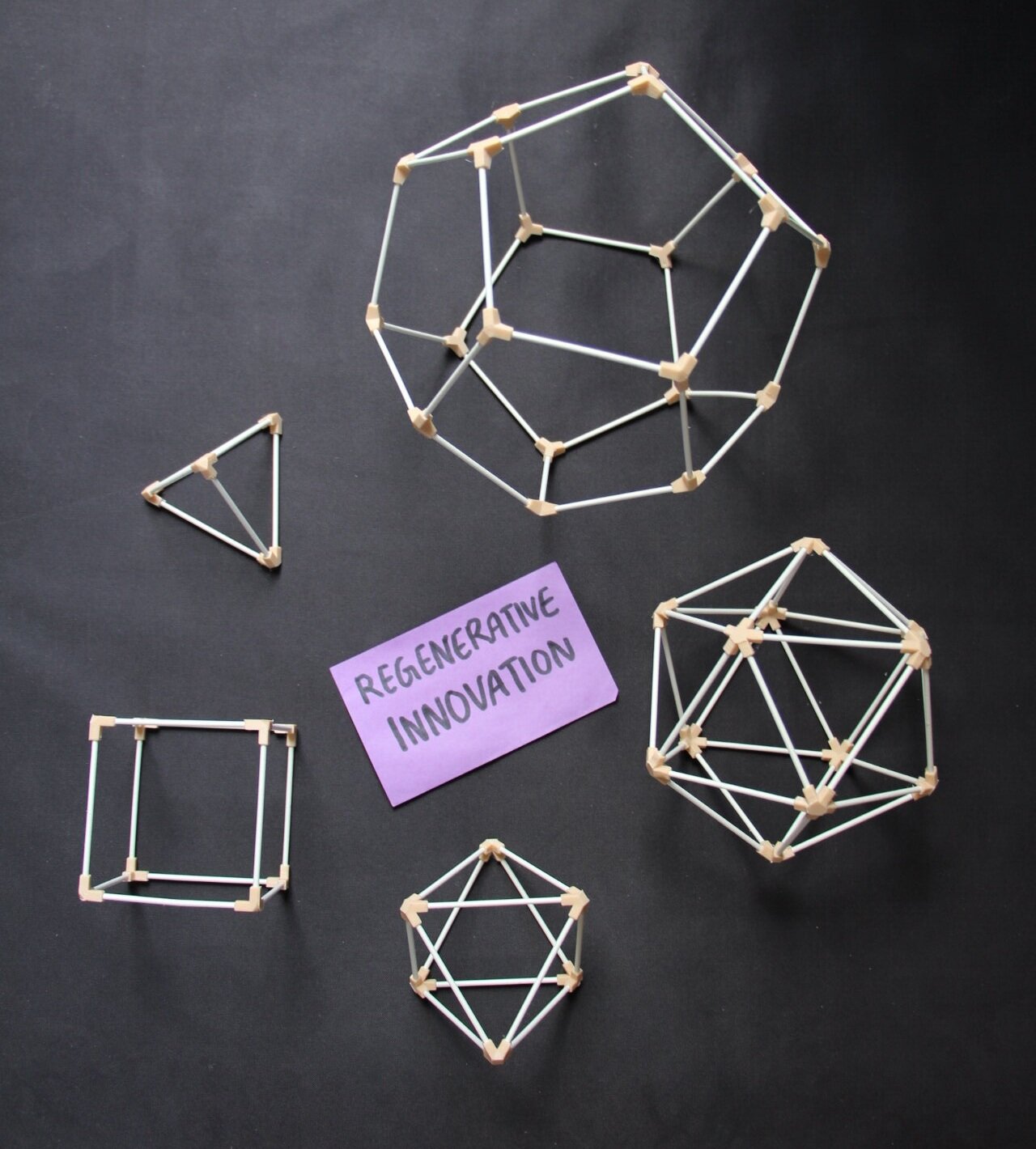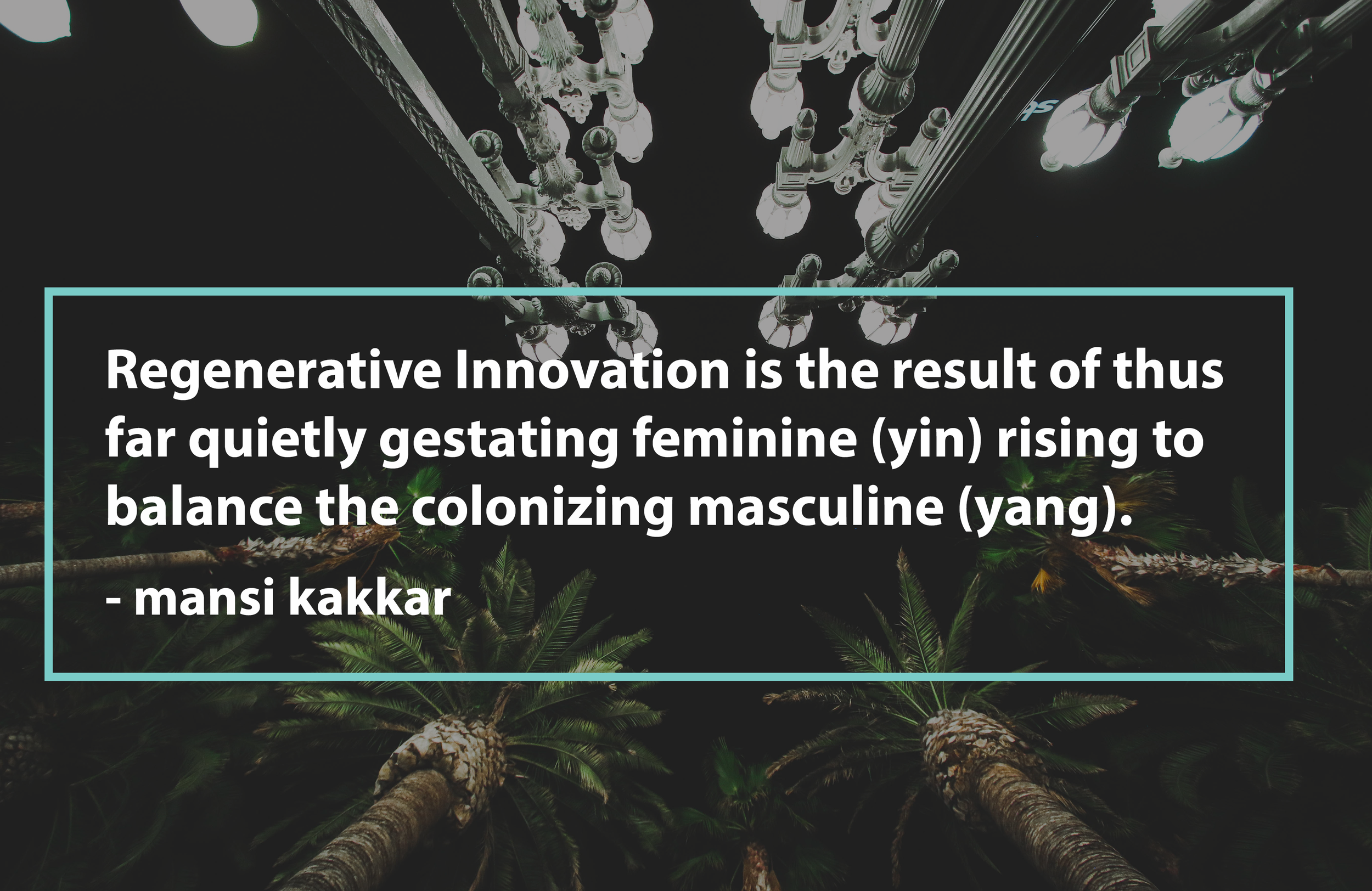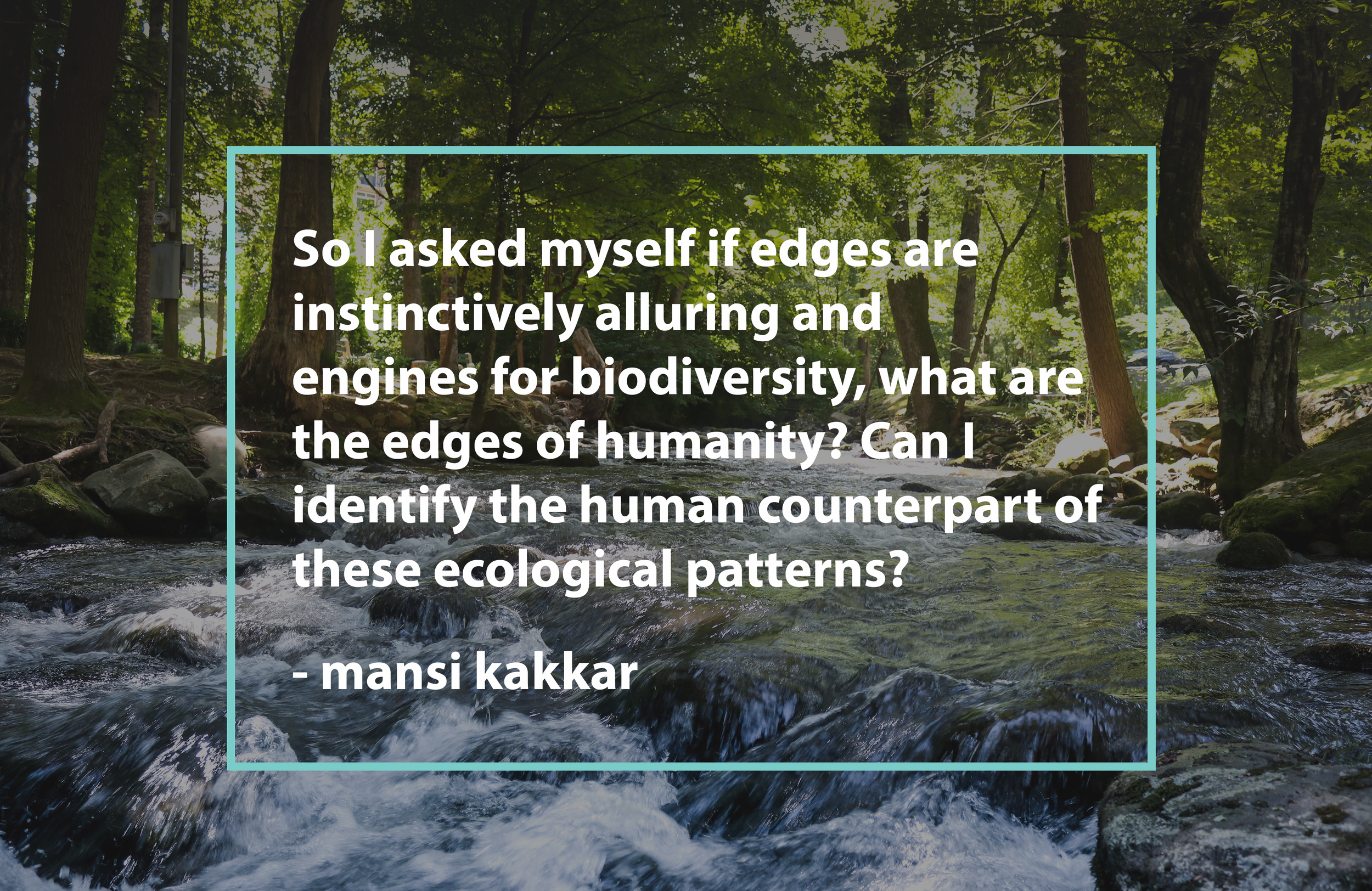Regenerative Innovation: How to design in uncertainty with human, ecological, technological and economic equity
…sometimes…
...i look out at everything
growing so wild
and faithfully beneath
the sky
and wonder
why we are the one
terrible
part of creation
privileged
to refuse our flowering….
DAVID WHYTE, from “THE SUN”
How to design in uncertainty with human, ecological, technological and economic equity? Regenerative Innovation (RI) answers this question. The symbols here represent the 5 edges of humanity a conceptual framework on which RI is based. Read more below.
What is innovation, really?
Innovation is seen as creative problem-solving. But we are constantly problem solving because we are constantly problem making. It is like someone built a car to go on road trips across the United States and then became a mechanic, making fixing cars the core purpose of their existence. It sounds ludicrous. Because it is. It’s like saying marriage is only about conflict resolution.
No more though, it is time to reclaim the word innovation from its hold in dominant domains, from the anthropocenic prancing parade of extracting as much value for self as possible. I want to reclaim the meaning of this word from its cheapening in service of the false drive of infinite growth. It’s atrophying of planet and people from the false bravado of a wounded masculine and feminine (Alpha and Omega) as alive in all of us regardless of our gender. I would like to follow the reclaiming of the word by calling it exactly what it is. Innovation is our instinctive evolutionary drive for and toward wonder. Innovation is life’s desire to become more intimate with itself through newness.
What is regeneration?
“In biology, regeneration is the process of renewal, restoration, and growth that makes genomes, cells, organisms, and ecosystems resilient to natural fluctuations or events that cause disturbance or damage. Every species is capable of regeneration, from bacteria to humans.” (Source)
While humans are capable of regenerating, we are stuck in a degenerative narrative about ourselves and our relationship to the planet. Therefore, to me, regeneration is not about the planet. Life will continue to out itself. Life always wins and the intelligence of the planet is far superior to that of any one species inhabiting it. Therefore the only thing that needs help and needs saving is humanity.
Regeneration is the renewal of humanity’s narrative about itself. It is a liberation of ourselves from our own degenerative notions, habits, and processes. Therefore I see no distinction between the words ‘liberation’ and ‘regeneration’.
Graphic by Mansi Kakkar
What is Regenerative Innovation (RI)?
Regenerative Innovation is an approach to fulfill our evolutionary drive while designing with human, economic, and ecological equity. No compromise. We audaciously attempt to explore a thus far untapped possibility.
Regenerative Innovation is grounded in people and the planet. Not just profit and products. Networks and relationships have a higher currency than efficiency and economies of scale. RI is the result of thus far quietly gestating feminine rising to balance the colonizing masculine. The atrophied cyclical rising to balance the dominant linear. The nutritive rising to balance the directive. The descriptive rising to balance the prescriptive.
Photo by Jeremy Bishop on Unsplash
The Regenerative Innovation framework - The Edges of Humanity
To understand what is regenerative innovation, we need to first understand an underlying framework that is the ground for all the tools, processes, and applications that are currently emerging. We are going to explore this underlying framework through the ecological phenomena of edges.
Aerial view of the Amazon River basin, one of the most biodiverse edges on the planet. Photo by Ümit Yıldırım on Unsplash
Ecosystems have unique qualities to them like a river is different from a forest. Each of these habitats house species that have evolved to thrive in those ecosystems. A river dolphin will not be found in a forest, a deer never in the river. However, different ecosystems despite their ecological uniqueness meet in special areas called ecological edges. For example where land meets water. Or forest meets grasslands. These edges exhibit unique patterns that are collectively called ‘The edge effect’ in ecology. The edge effect shows that a greater diversity of life is found in the region. Species from both ecosystems are found in this overlap zone, as well as unique native species of edges that cannot be found in either ecosystem.
I have always been fascinated by edges and how even human civilization historically begin at ecological edges. Our biggest cities like Mumbai, Shanghai, New York, and Mombasa are along edges (ports). Even small village hamlets across my travels find an edge (near pond, lake, or water) to create their own settlement. If one gets lost in the wild, finding a water body is generally suggested to find resources to sustain one’s life. There is something instinctive about edges especially those near water bodies.
I am delighted to say after much pondering, synchronicity, intuitive creative flow states which took me into quantum physics, geometry, living systems and regular plane division, I present the five edges of humanity.
The five platonic solids are the symbols I am using for each of the five human edges. Here are the tetrahedron, cube, octahedron, icosahedron and dodecahedron.
The Five Edges of Humanity
The uniqueness of an ecosystem I correlated to the uniqueness of an individual. From that lens, I have identified five edges. Each leading to the next with a higher level of complexity. I also use the five platonic solids as symbols for each of these.
The octahedron represents the first edge - Relationship.
RELATIONSHIPS - The First Edge of Humanity
The most prominent and essential edge, in which we all engage is relationships. We all form relationships, agnostic of where we live, our beliefs and values. Humans as social creature build relationships of different kinds. A few examples - Romantic (spouse), professional (employee, colleagues), transactional (bank teller).
The second edge is conversation, denoted by a cube.
CONVERSATION - The Second Edge of Humanity
Going down a level of complexity is a conversation. A conversation is where the ‘nutrients’ of each individual flow to each other. A relationship is basically a decision to stay in a certain type of conversation. We have different kinds of conversations all day long to perform the various functions we are dependent on others for.
The third edge is organization, denoted by a icosahedron
ORGANIZATION - The Third Edge of Humanity
Going a level up in complexity is an organization. Where more than two people stay in an organized form of conversation in a specific order becomes an organization. Organizations are ways in which we come together to amplify a specific conversation. Organizations can be for political, religious, business, education. Today we have huge multi-billion dollar organizations as well as tiny community choirs.
The fourth edge is network, denoted by a dodecahedron
NETWORK - The Fourth Edge of Humanity
Going up in another level is a network. A network is basically the decentralized, organic web of relationships that intermingle, overlap, and continue to morph dynamically. They are chaotic in that they cannot be ordered. They transcend organizational, national, and international borders. The relationships and conversations in a network is constantly in a flux, where the movement and strength of a network cannot be predicted.
The fifth edge is perception, denoted by a tetrahedron
PERCEPTION - The Fifth Edge of Humanity
Going down (or up, as I would think) in complexity is perception. Perception is the edge between the external world and my internal system. My senses, nervous system, memory all work together all the time to create a sense of what is going on. This is the most complex and yet the most ubiquitous edge. The perception of no two people is exactly alike. This diversity in sense-making has within it chaordic richness. This edge is also the most enduring, the hardest to change.
Even though I presented them linearly, these edges are actually cyclical as well interdependent, as they each affect all the others.
In future posts I will we exploring then how does this framework help us design in uncertainty, and how can we achieve economic, human, technological and ecological equity by regenerating edges. Stay tuned!













